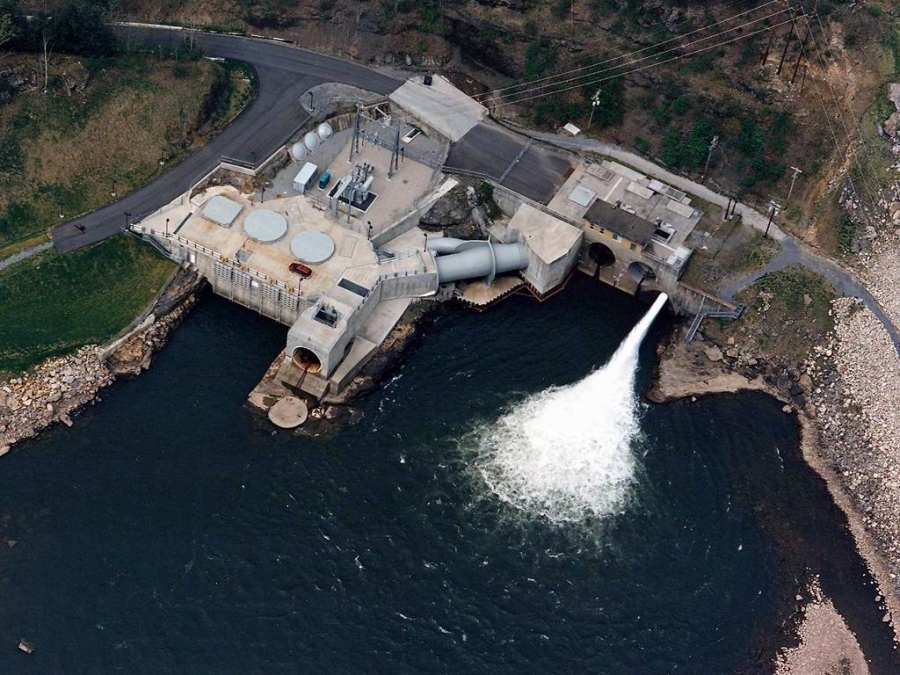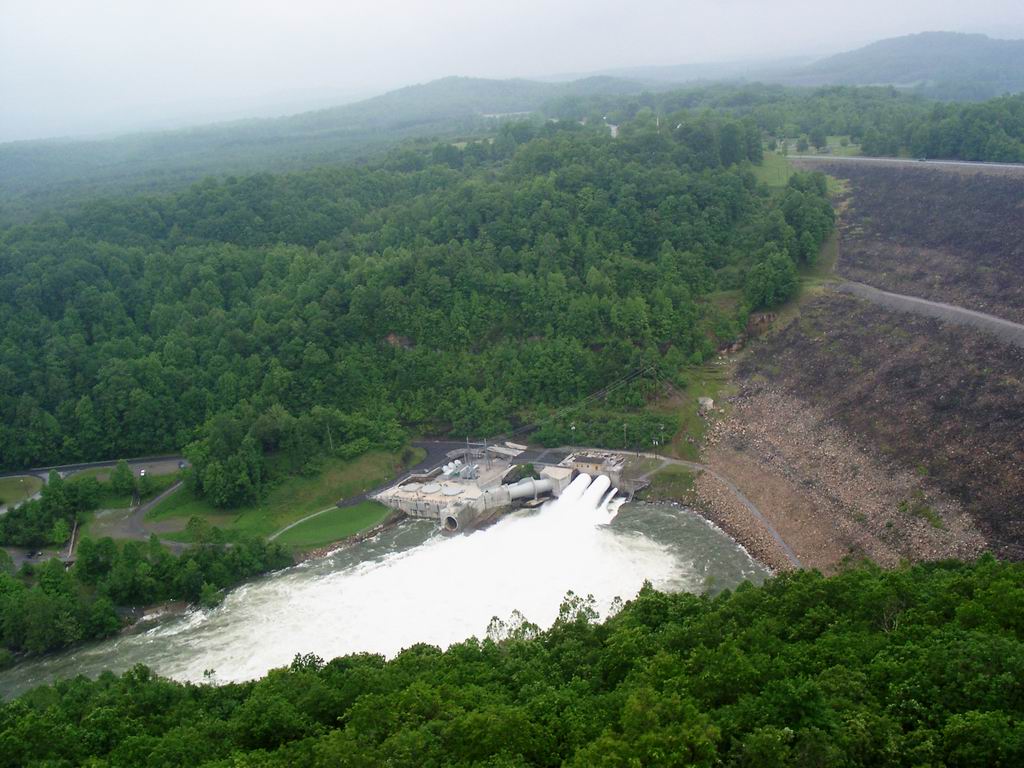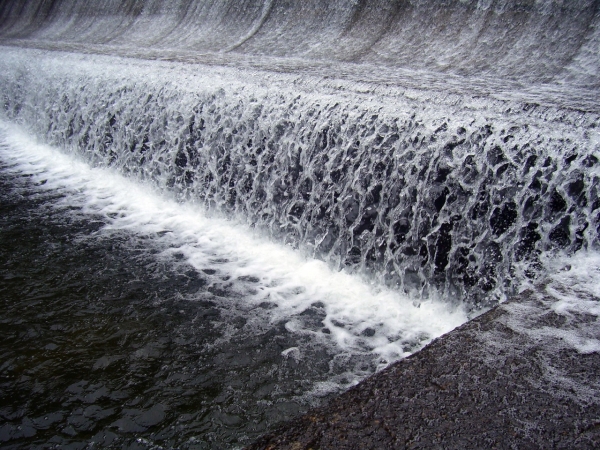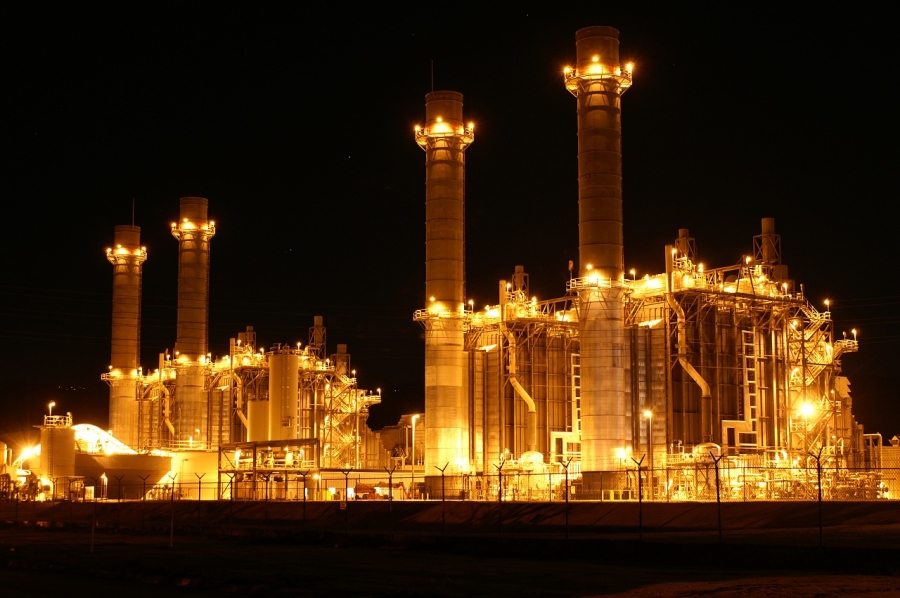Infrastructure at Work: Summersville Dam, WV
Summersville Dam, in south central West Virginia, is the second largest rock-fill dam in the eastern United States and exemplifies the way a dam can provide multiple enhancements, such as recreational activities, flood control, and electricity generation, to the local community.
 Summersville Dam
U.S. Army Corps
Summersville Dam
U.S. Army Corps
†
†
Built over a span of six years from 1960-1966, the Summersville Dam was dedicated upon its completion by President Lyndon Johnson. According to the U.S. Army Corps of Engineers (USACE) Huntington District , the dam regulates a drainage area of over 800 square miles (2080 sq km), is 390í-0" (120 m) high and 2,280í -0" (695 m) long and was constructed with over 12 million cubic yards (9,200,000 cubic m) of earth and rock.
The water level in Summersville Lake is controlled by releases from the dam and can be 75í-0" (22.86 m) higher in the summer than in winter. Particularly in the late summer and fall, some of the best white water rafting in the United States is available as reservoir water is released through the dam into the Gauley River below Summersville Lake.

In 2001, a $53 million project was completed to harness the incredible potential energy of the water contained in each dam release. The hydroelectric plantís working pipeline, commonly referred to as the penstock, is 29í-0" (8.8 m) in diameter and over 1,550í-0" (472.44 m) in length. Each year, the hydroelectric plant at the base of the dam generates over 220 million kilowatt-hours of electric power. Those who visited the dam prior to the hydroelectric project might recall the thunderous noise and shaking ground that resulted from water releases. Today, much of that energy is mitigated by the new water turbines in the damís powerhouse, which generate electricity as they are rotated by huge volumes of water flow.
This link provides an excellent administrative and technical summary of the entire hydroelectric project at the Summersville Dam. Typically, decades of planning are involved in these dam infrastructure efforts, as evidenced by the project timeline contained at the link. Once again, carefully engineered dams appear to offer one of the best returns on investment for the tax-paying public.

Andrew Kimos
Andrew Kimos completed the civil engineering programs at the U.S. Coast Guard Academy (B.S. 1987) and the University of Illinois (M.S. 1992) and is a registered Professional Engineer in the state of Wisconsin. He served as a design engineer, construction project manager, facilities engineer, and executive leader in the Coast Guard for over 20 years. He worked as a regional airline pilot in the western U.S. before joining the Buildipedia.com team as Operations Channel Producer.
Website: buildipedia.com/channels/operations


